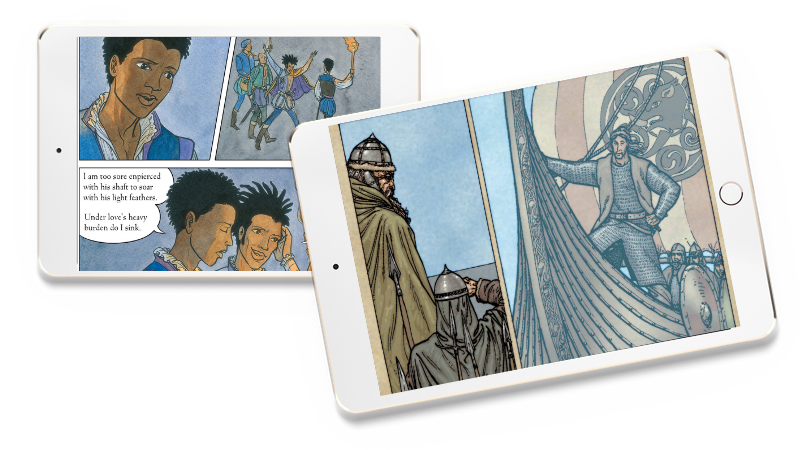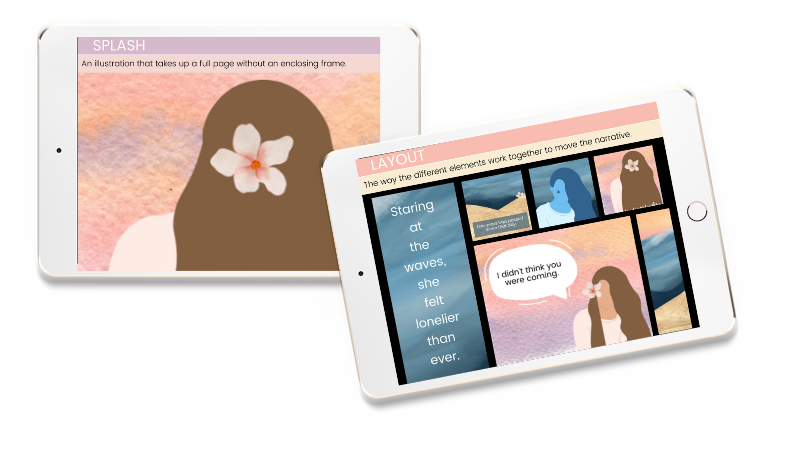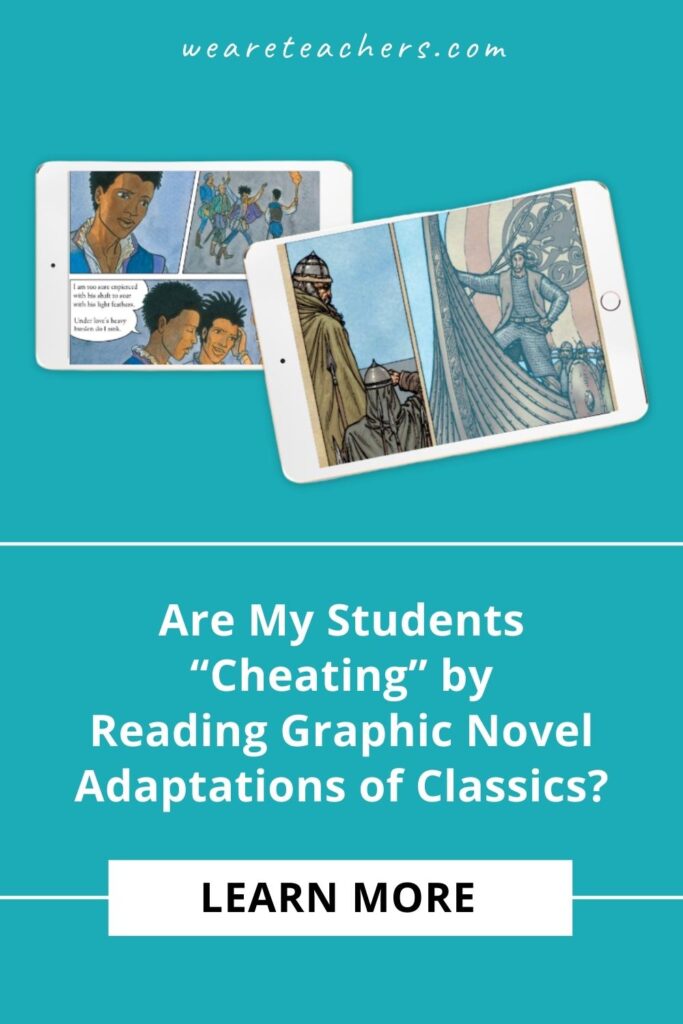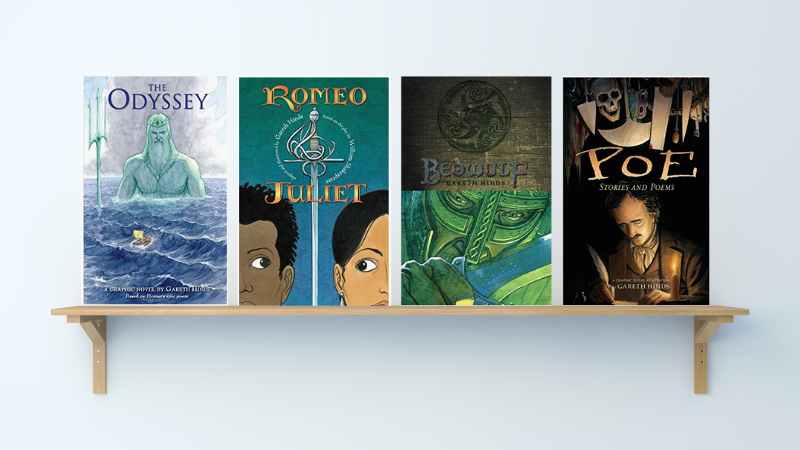Have you met Gareth Hinds?
I hope so, because he’s basically an English teacher’s superhero. He takes classics that many students struggle to understand and creates well-researched, strikingly designed visual versions: graphic novels.
While The Odyssey might be his most popular adaptation, it’s just the tip of the beautifully painted iceberg. He’s got Romeo & Juliet, Macbeth, and Beowulf too. Teaching Poe? He’s got your back! Do your students love the YA novel Graceling? Wait till they see it in visual form.
Does picking up Gareth Hinds’ version of the classic on your booklist mean your students won’t be doing “serious” English?
Nope.
Does it mean way more kids will find The Odyssey accessible, interesting, and even fun?
Yep.
How to teach a graphic adaptation: curriculum options
When it comes to teaching graphic novel adaptations, you’ve got a lot of options. Here are all of the Hinds titles you can choose from:
- The Odyssey
- The Iliad
- Macbeth
- Beowulf
- King Lear
- Edgar Allan Poe: Stories and Poems
- Romeo and Juliet
- The Merchant of Venice
- Gifts From the Gods (Ancient Roman and Greek Mythology)
You can teach the graphic novel version instead of the text version, making your unit shorter and more accessible but, of course, losing some of the original. Or you can teach the graphic novel as a complement to the original text, helping make it more accessible and providing new layers of meaning.
You can choose to dive deep into the visual language of graphic novels as part of either of these pathways, or ignore the artistic elements for the most part, only using the graphic novel to provide more accessibility.
Teaching a graphic adaptation: classroom activities
In a recent interview, Gareth Hinds suggested a range of helpful activities for students who read his graphic novels.
Students can search for visual symbolism and color choices. Send your kiddos on a scavenger hunt for key visual moments in the text, then start them on a discussion or writing prompt based on their most interesting finds.
You can also do this for characterization: Search for artistic choices that help bring a character’s traits and evolution to life. Which image do students think best captures a certain character? Which shows a character’s development in some way?

Images from Gareth Hinds’ adaptations of Romeo & Juliet and Beowulf, used with his permission.
Graphic novels are also an ideal subject for teaching inference. Gutters (the spaces between panels) can play a key part in this conversation. Ask students what’s happening in between the panels. How do you know? Which visuals helped you figure that out?
It’s helpful to guide students through the visual vocabulary of graphic novels along the way, explaining terms like gutters, panels, composition, splashes, bleeds, etc. That way they’re equipped to make connections between those visuals and the meaning they’re highlighting.

Illustrations of these concepts by Betsy Potash (that’s me!), with definitions adapted from this great resource from Penguin.
Teaching a graphic adaptation: extension activities
Once students have read a graphic adaptation and begun to consider the visual array of possibilities available, you’ll have the option for them to create graphic adaptations of pieces of anything they read.
Consider having them create a visual version of a poem, a short story, or part of a novel.
You can also invite them to create graphic narratives from their own life, putting a snapshot from their story down onto paper to share with the class.

Gareth Hinds suggests you keep it simple. Let students start with a pencil and some paper, and encourage stick figures, but with an upgrade. He advises kids, “give your stick figure a costume and some hands and feet and some bendy arms and legs, and suddenly they’re much more of a character and less of a stick figure.”
Canva can also be a helpful tool, allowing students to layer different artistic elements for the look they want.
Ready for action?
While some students may fall in love with Homer and Shakespeare without the help of a graphic adaptation, Gareth Hinds’ work helps more students understand and enjoy classic texts. You don’t even have to choose between the original and the adaptation. If you wish, you can use graphic adaptations as an additional layer to create more accessibility and more starting points for conversation and writing.
Sounds pretty good, right?
Helpful resources:
Spark Creativity: The Visual Language of Graphic Novels
What are your thoughts on teaching the classics using graphic novels? Let us know in the comments!
Plus, for more articles like this, be sure to subscribe to our newsletters.


